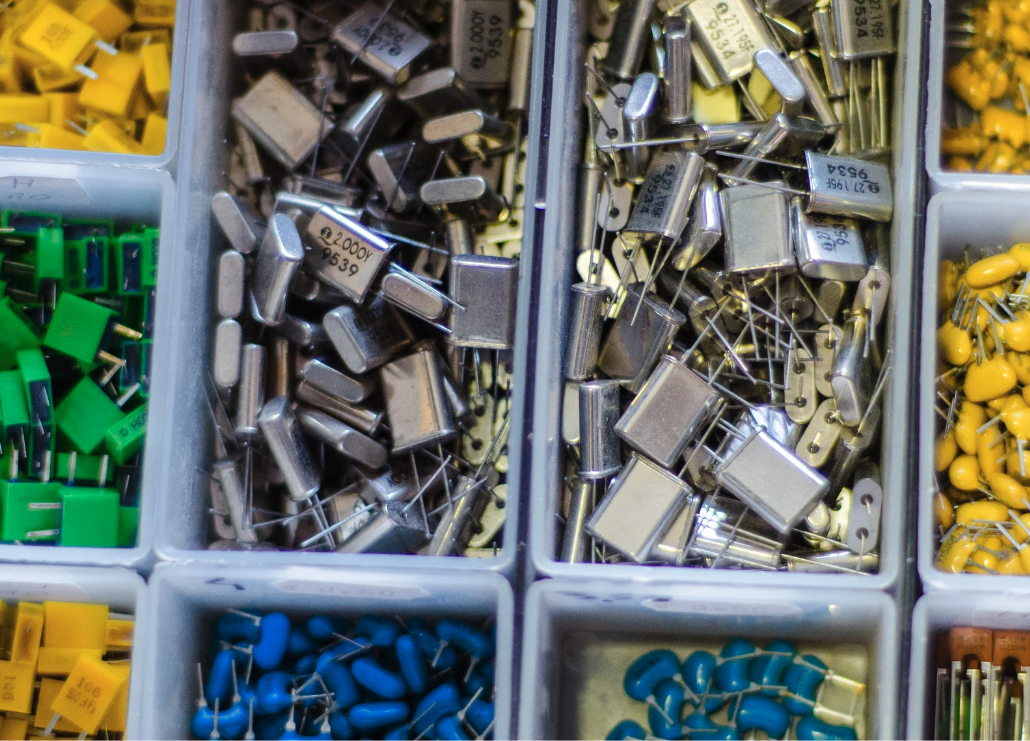Electronic components explained - definition, functions, types
by Quotebeam Team
Apr 24, 2024

Electronic components form the building blocks of modern technology, powering devices ranging from smartphones and computers to advanced industrial machinery. Understanding these components is essential for anyone interested in electronics. In this guide, we'll delve into the world of electronic components, exploring their definition, functions, and various types.
What are Electronic Components?
Electronic components are discrete devices or parts used to manipulate electrical signals within an electrical circuit. They can be active, meaning they control the flow of electricity, or passive, meaning they resist the flow of electricity. Electronic components are the fundamental units that make up electronic circuits, enabling them to perform specific functions.
What are the Functions of Electronic Components?
Electronic components serve various functions within an electrical circuit, including:
- Signal Processing: Components like amplifiers and filters process electrical signals to modify their amplitude, frequency, or phase.
- Control: Components such as transistors and integrated circuits (ICs) regulate the flow of electricity within a circuit, controlling the operation of devices.
- Energy Conversion: Components like diodes and transformers convert electrical energy from one form to another, such as from AC to DC or vice versa.
- Storage: Components such as capacitors and batteries store electrical energy, allowing for temporary or long-term storage within a circuit.
Understanding the functions of electronic components is crucial for designing and troubleshooting electronic circuits effectively.
What are the Types of Electronic Components?
Electronic components can be classified into two main categories: active and passive.
Active Electronic Components:
Active electronic components require an external power source to operate and are often used in industrial automation for tasks that involve signal amplification, switching, or generation. Common examples include:
- Lightning -Signaling Devices
- Programmable Logic Controllers
- Transistors
- Integrated circuits (ICs)
- Operational amplifiers (Op-amps)
- Voltage regulators
- Microcontrollers
Passive Electronic Components:
Passive electronic components do not require an external power source and are primarily used for tasks such as signal conditioning, filtering, and energy storage in industrial automation systems. Common examples include:
- Sensors & Transducers
- Resistors
- Capacitors
- Inductors
- Diodes
- Transformers
Active vs Passive Electronic Components:
Active and passive electronic components play distinct roles in industrial automation systems, each offering unique advantages in specific applications.
Here's when it's best to use active electronic components:
- Signal Amplification: Active components like operational amplifiers (Op-amps) are used to amplify weak signals from sensors or transducers, ensuring accurate measurement and detection in industrial processes.
- Signal Processing: Integrated circuits (ICs) and microcontrollers are employed for signal processing tasks such as data acquisition, processing, and control in automation systems. They offer computational capabilities and programmable functionality to implement complex control algorithms and logic.
- Power Regulation: Voltage regulators are essential for stabilizing power supplies and ensuring consistent voltage levels in industrial automation systems. They are used to provide regulated power to sensitive electronic components, preventing voltage fluctuations and ensuring reliable operation.
- Switching Operations: Transistors and solid-state relays (SSRs) are commonly used for switching operations in industrial automation, controlling the activation and deactivation of electrical devices such as motors, actuators, and solenoid valves. They offer fast switching speeds, high reliability, and precise control over switching states.
Here's when it's best to use passive electronic components:
- Signal Conditioning: Resistors and capacitors are used for signal conditioning tasks such as impedance matching, signal filtering, and voltage division in industrial automation systems. They help optimize signal quality and integrity for accurate sensing and control.
- Energy Storage: Capacitors and inductors are employed for energy storage and transient suppression in automation systems. They store electrical energy temporarily, providing backup power during voltage dips or fluctuations and suppressing transient voltage spikes to protect sensitive electronic components.
- Circuit Protection: Diodes and transient voltage suppressors (TVS diodes) are used for circuit protection against overvoltage, reverse voltage, and electrostatic discharge (ESD) events in industrial automation systems. They safeguard electronic components and ensure system reliability in harsh operating environments.
Understanding the strengths and limitations of active and passive electronic components is essential for designing robust and efficient industrial automation systems tailored to specific application requirements. By leveraging the right combination of active and passive components, engineers can optimize system performance, reliability, and functionality in diverse industrial settings.
